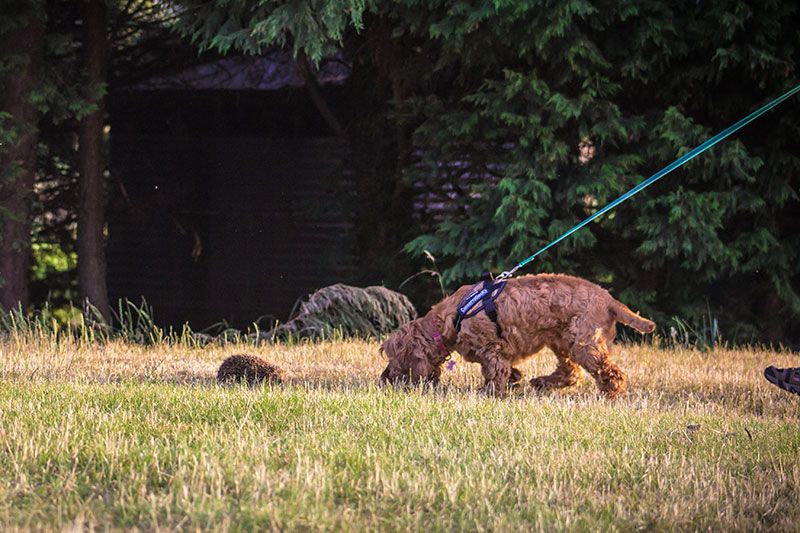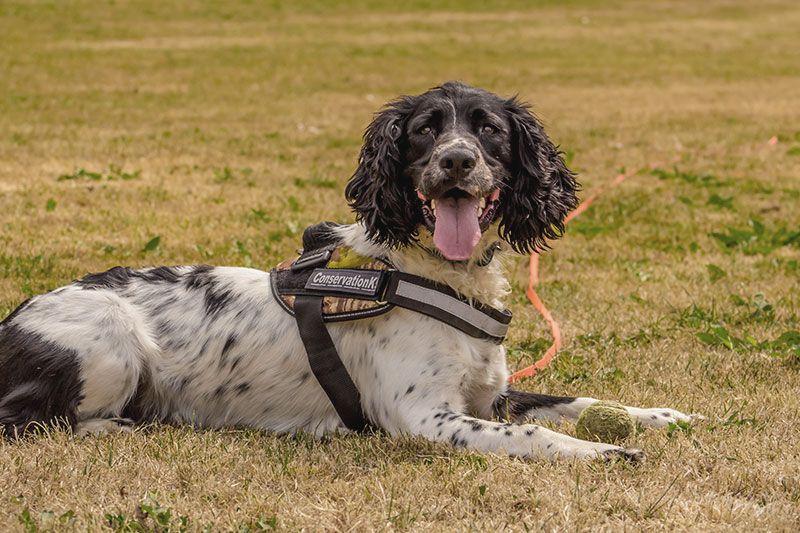Detection dogs are training to help protect nesting hedgehogs

Although developers are obliged to look for animals at risk and move them, it’s easier said than done. In the day, hedgehog nests are almost impossible to see. So how do we know if a hedgehog is nesting nearby and may be in danger?
Funding for this project has now finished
Clearing land for development poses immediate threat to hedgehogs
As you probably know, the hedgehog population is plummeting. Changes in the way the countryside is managed have reduced food supplies for hedgehogs and their predators. Closed-in gardens in cities and suburbs stop them moving freely across their range. Roads and other infrastructure developments carve up their habitat and create artificial barriers where they roam. And climate change is likely to impact a species that relies on long, cold, stable winters. We’re urgently investigating all of these as well as galvanising the public to do their bit, advising farmers and landowners, and enlisting the support of MPs.

An immediate threat to hedgehogs is when the land they live on is cleared for development. Although developers are obliged to look for animals at risk and move them, it’s easier said than done. Hedgehogs spend most of the day curled up in nests that are hard to spot with the naked eye. The long grass, shrubbery and hedgerows they prefer make them really hard to see and extremely vulnerable. As well as the destruction of vital habitat, hedgehogs are too often killed or injured by machinery when land is cleared for development or just to look ‘tidy’.
To tackle this threat, we need to find nesting hedgehogs and move them to safety. Typically, hedgehogs are surveyed at night by a single person with a spotlight, which only identifies the presence of hedgehogs out and about. In the day, nests are almost impossible to see. So how do we know if a hedgehog is nesting nearby and may be in danger?
Training dogs to detect nesting hedgehogs
Henry’s one of a group of conservation detective dogs from Conservation K9 Consultancy. He and his fellow dog colleagues sniff out all manner of endangered species. In the UK, they’ve already helped find bat carcasses in order to understand the impact of wind farms, and pine marten scats to help track the elusive mammals’ whereabouts.
Could Henry work his magic with hedgehogs? We decided to try. So we’re working with Conservation K9 to train Henry to detect nesting hedgehogs on potential development sites. With a sense of smell 100,000 times more sensitive than ours, Henry can sniff out a hedgehog that humans don’t stand a chance of finding. Right now, Henry’s in the middle of his training by project leader Lucy Bearman-Brown. Lucy started by finding hedgehogs herself the traditional way and marking them with a small tracking device. When Henry has his go the next night, Lucy compares his ability to find the same hedgehogs, no hedgehogs or other ones. She then looks again herself, this time using thermal cameras, to see if he’s missed any. Doing this repeatedly over both summer and winter will eventually reveal whether Henry can find nesting hedgehogs more reliably than a human aided by a thermal camera.
Early results are really encouraging. As we suspected Henry’s already been finding hedgehogs that Lucy couldn’t locate. We can’t wait to hear more from Lucy about how Henry’s doing.
This project is only possible thanks to our generous donors. Read the final story on this project:
